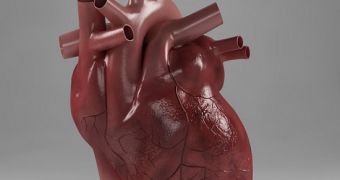Stem cells can successfully be used to help broken hearts beat harmoniously again by repairing muscle damage caused by events such as heart attacks, researchers writing in yesterday's issue of The Journal of Physiology argue.
The scientists explain that, during a heart attack and other similar incidents, certain areas of the heart quit getting as much oxygen as they would need in order to function properly.
Because of this lack of oxygen, some cells die.
This leads to the emergence of so-called infarcted areas and even scarring, and more often than not impedes the heart's ability to continue beating in a harmonious manner.
Presently, patients whose hearts don't display a correct cardiac motion are treated with the help of pacing devices.
However, this treatment option fails to deliver any noteworthy benefits in some 30% of cases.
Unlike pacing devices, stem cells can restore correct cardiac motion by reconstructing heart muscle and forming functional cardiac tissue, Science Daily tells us.
This process is known as “biological resynchronization.”
For the time being, the technique has not been used to treat humans. However, it has been tested on mice and the results were impressive, to say the least.
Thus, the stem cells managed to repair the rodents' hearts, and made them beat harmoniously. Furthermore, no side effects were observed.
“Stem cells, with a capacity of generating new heart muscle, were engineered from ordinary tissue. These engineered stem cells were injected into damaged hearts of mice. The impact on cardiac resynchronization was documented using high-resolution imaging,” Doctor Satsuki Yamada explained.
The researchers working on developing this innovative strategy of biological resynchronization plan to carry out further investigations, and hope it will not be long until they can roll out a clinical trial involving human patients.
“The heart is vulnerable to injury due to a limited capacity for self-repair. Current therapies are unable to repair damaged cardiac tissue.”
“This proof-of-principle study provides evidence that a stem cell-based regenerative intervention may prove effective in synchronizing failing hearts, extending the reach of currently available therapies,” Professor Andre Terzic commented on the importance of this research.

 14 DAY TRIAL //
14 DAY TRIAL //